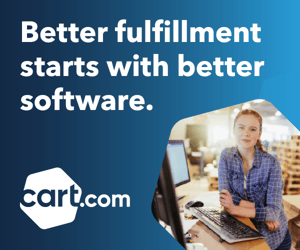Tracking the right marketing metrics is crucial for optimizing campaigns and driving success in ecommerce and retail. Understanding these key metrics ensures that both internal teams and external marketing partners can deliver measurable results that align with your brand's goals. Whether you're aiming to boost customer acquisition, retention or overall engagement, focusing on lifecycle marketing metrics can provide valuable insights and guide your strategy. In this article, we'll explore the essential metrics every retail brand should monitor and offer practical tips for enhancing your marketing efforts so you can transform your campaigns and achieve greater success with data-driven decisions.
What is lifecycle marketing?
Lifecycle marketing targets customers at various stages of their journey, from awareness to retention. This approach ensures that marketing efforts are tailored to meet customers’ specific needs at each stage, maximizing the effectiveness of campaigns and fostering long-term relationships.
Stages of lifecycle marketing
- Awareness: The lifecycle begins with the Awareness stage, where potential customers first become aware of a brand or product. This happens through various channels such as advertising, social media, word-of-mouth or search engines. Businesses aim to capture the attention of their target audience and generate interest in what they offer. For example, a new skincare brand might use Instagram ads to reach beauty enthusiasts, sparking initial curiosity about their products.
- Engagement: Once customers are aware of the brand, the Engagement stage involves interacting with them through various touchpoints to deepen their interest and connection. This can include providing valuable content, engaging on social media, or offering promotions to encourage further interaction. The goal is to keep the brand top of mind and encourage ongoing engagement. For instance, a fitness brand might share workout tips and host live Q&A sessions to engage with their audience.
- Evaluation: During the Evaluation stage, customers actively assess the value proposition of the product. They may compare features, read reviews or seek recommendations to make informed decisions. Brands must provide transparent information and address any concerns to guide customers towards a positive evaluation. An electronics retailer, for example, might offer detailed product comparisons and customer testimonials to help shoppers make informed choices.
- Purchase: The Purchase stage marks the moment when customers decide to buy the product. This can occur online, in-store or through other channels depending on the business model. It’s essential for businesses to ensure a smooth and frictionless purchasing process to minimize barriers and facilitate conversions. A seamless checkout experience on an ecommerce site, for instance, can significantly boost conversion rates.
- Support: After the purchase, the Support stage provides assistance, follow-up and addresses any post-purchase issues or questions. This can include customer service, technical support or product assistance. Offering excellent support reinforces customer satisfaction and builds trust in the brand.
- Loyalty: The final stage of the lifecycle is Loyalty, where satisfied customers become repeat buyers and advocates for the brand. Building loyalty requires ongoing engagement, personalized experiences and rewards programs to incentivize continued patronage and word-of-mouth referrals. Loyal customers not only contribute to recurring revenue but also serve as brand ambassadors, expanding reach and driving growth through their positive endorsements and recommendations. An apparel brand might implement a loyalty program offering discounts or exclusive early access to new collections after a certain number of purchases to encourage repeat business.
6 Key lifecycle marketing metrics to track
Tracking the right marketing metrics is critical for optimizing campaigns and driving success. Here are six key metrics that every retail brand should monitor to ensure their marketing efforts are effective and efficient.
1. Customer acquisition cost (CAC)
What it is: Customer Acquisition Cost (CAC) is the total cost of acquiring a new customer, including all marketing and sales expenses. This metric encompasses everything from advertising costs to sales team salaries.
Why it matters: CAC helps evaluate the efficiency of your marketing campaigns and budgeting. For instance, if a clothing brand spends $10,000 on marketing in a month and acquires 200 new customers, their CAC is $50. Knowing this helps the brand assess whether their marketing spend is justified by the revenue generated from new customers.
2. Conversion rate
What it is: Conversion Rate is the percentage of visitors who complete a desired action, such as making a purchase or signing up for a newsletter.
Why it matters: This metric indicates the effectiveness of your marketing and sales efforts. For example, if 1,000 people visit an online apparel store and 50 make a purchase, the conversion rate is 5%. A high conversion rate typically signifies that your marketing strategies are successfully turning interest into action.
3. Customer lifetime value (CLV)
What it is: Customer Lifetime Value (CLV) is the predicted revenue a customer will generate over their entire relationship with your brand.
Why it matters: CLV assists in understanding the long-term value of customers and informs marketing spend. For example, if a loyal customer spends an average of $1,000 per year on your apparel and typically remains a customer for five years, their CLV is $5,000. This helps in strategizing how much to invest in acquiring and retaining customers.
4. Retention rate
What it is: Retention Rate is the percentage of customers who continue to do business with you over a specific period.
Why it matters: High retention rates indicate customer satisfaction and brand loyalty. If an apparel brand notices that 80% of their customers make repeat purchases within a year, it signifies strong customer loyalty and satisfaction, suggesting that their products and services are meeting customer expectations.
5. Return on marketing investment (ROMI)
What it is: ROMI measures the revenue generated from marketing activities relative to the cost of those activities.
Why it matters: ROMI provides a clear picture of the overall effectiveness and profitability of your marketing campaigns. For instance, if a marketing campaign for a new clothing line costs $5,000 and generates $20,000 in sales, the ROMI is 4:1, indicating a successful investment.
6. Engagement metrics
What they are: Engagement metrics include email open rates, click-through rates and social media engagement.
Why they matter: These metrics provide insights into how well your content is resonating with your audience. For example, high open and click-through rates on a promotional email campaign for a new collection indicate that the content is engaging and relevant to your audience, guiding future marketing strategies.
By tracking these key metrics, retail and ecommerce brands can gain valuable insights into their marketing performance, make informed decisions and continually optimize their strategies for greater success.
How to optimize your marketing campaigns
Optimizing your marketing campaigns is essential for achieving maximum impact and driving growth. Here are three strategies to enhance your marketing efforts effectively.
- Leverage data analytics: Use advanced analytics tools to track and interpret your marketing metrics. Platforms like Google Analytics or specialized marketing analytics software can provide deep insights into customer behavior and campaign performance. Doing this helps you make data-driven decisions to improve campaign performance. For example, an apparel brand can analyze website traffic data to identify the most effective marketing channels and adjust their budget accordingly.
- Personalize and segment: Tailor your marketing messages to different customer segments based on behavior and preferences. Use data to create personalized email campaigns or targeted social media ads that resonate with specific groups. This makes your campaigns more relevant and effective.
- Test and iterate: Implement A/B testing to determine the best-performing strategies. Test different versions of your marketing materials to see which ones drive more engagement or conversions. An example would be testing two versions of an email subject line to see which one has a higher open rate, then using the winning version in future campaigns.
Choosing the right marketing partner
Selecting a strategic marketing partner lets you create campaigns that are effective and aligned with your business goals. When choosing, consider expertise, experience, transparency, reporting, customization and flexibility. Look for solutions and services with a proven track record in lifecycle marketing by reviewing case studies and client testimonials to gauge their success. Outsourcing your marketing efforts can be a strategic move for retail brands looking to enhance their lifecycle marketing. By focusing on the right metrics and choosing the right partners, you can track success and continuously optimize your campaigns for maximum impact. Contact our team today to see if Cart.com has the right services and solutions for you.
Subscribe to our emails for the latest industry insights!
By entering your email, you agree to receive marketing emails from Cart.com







